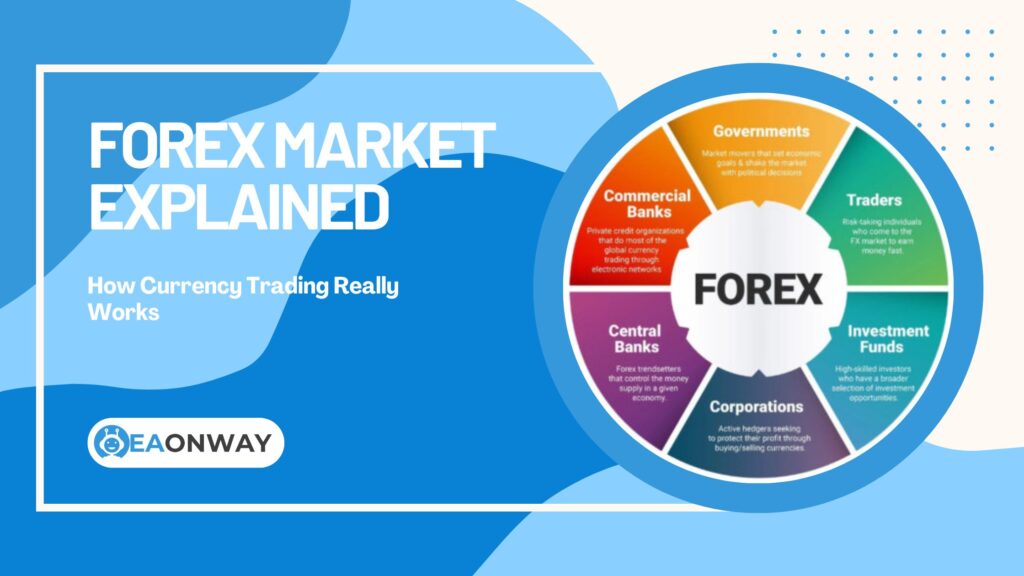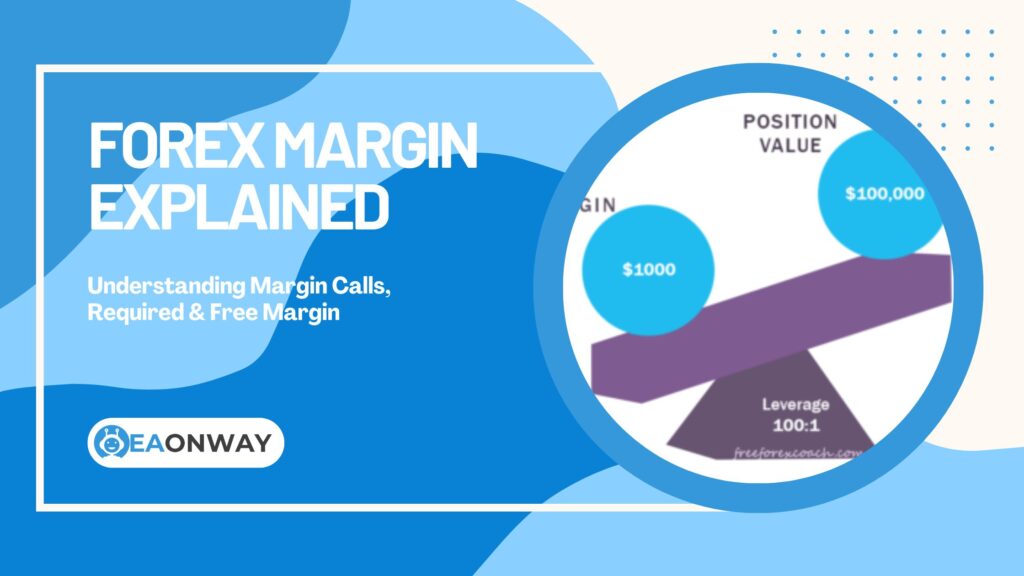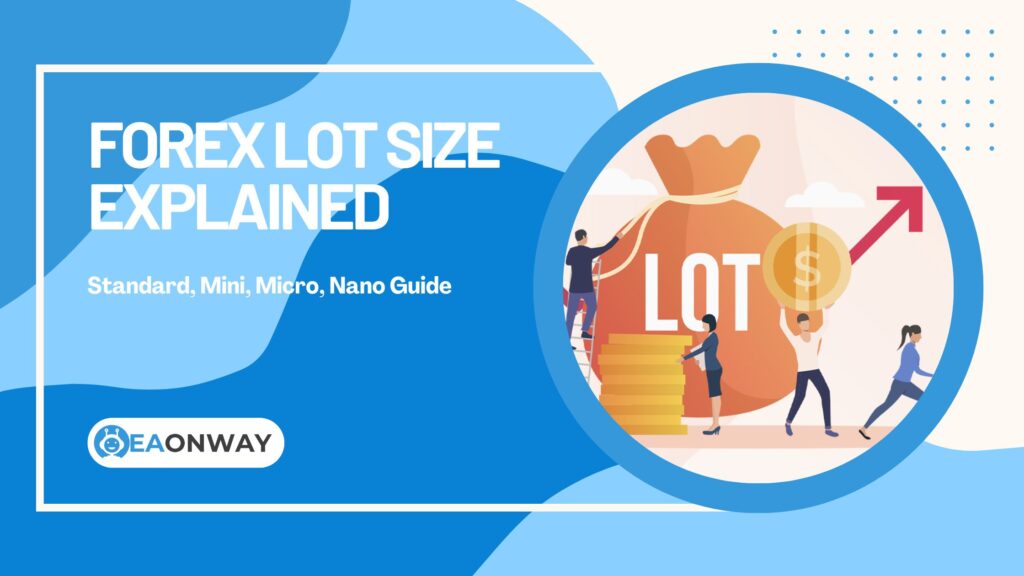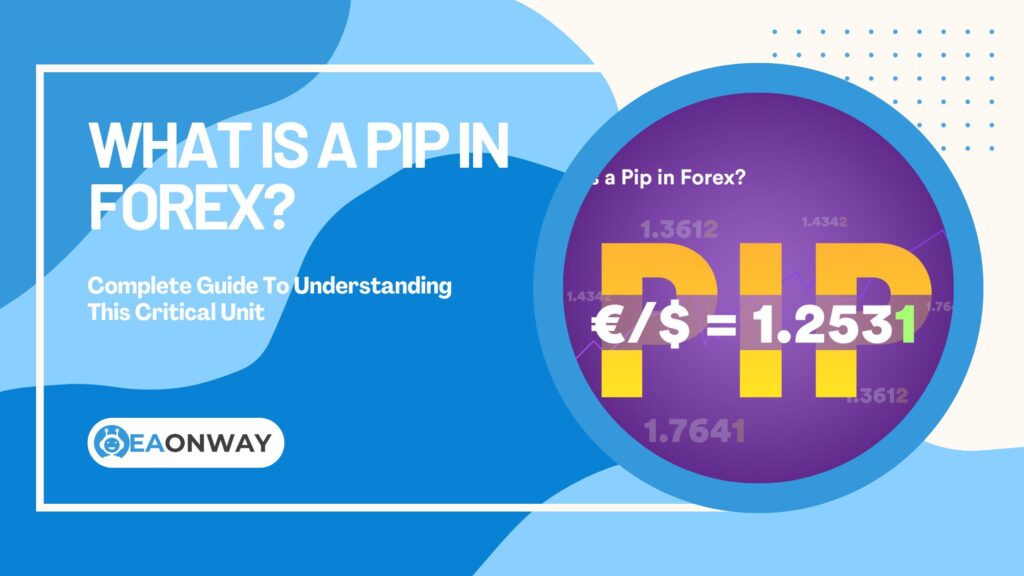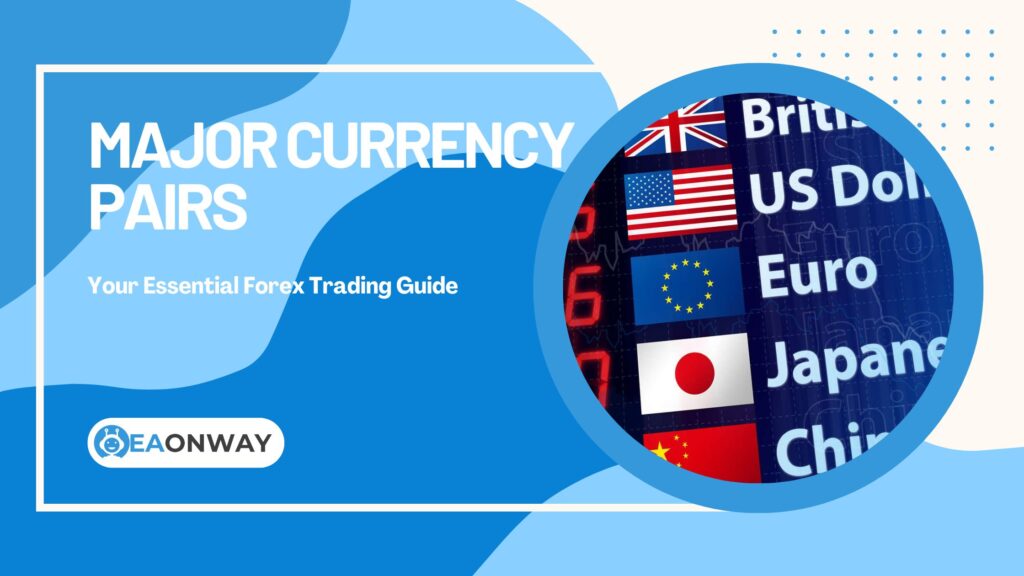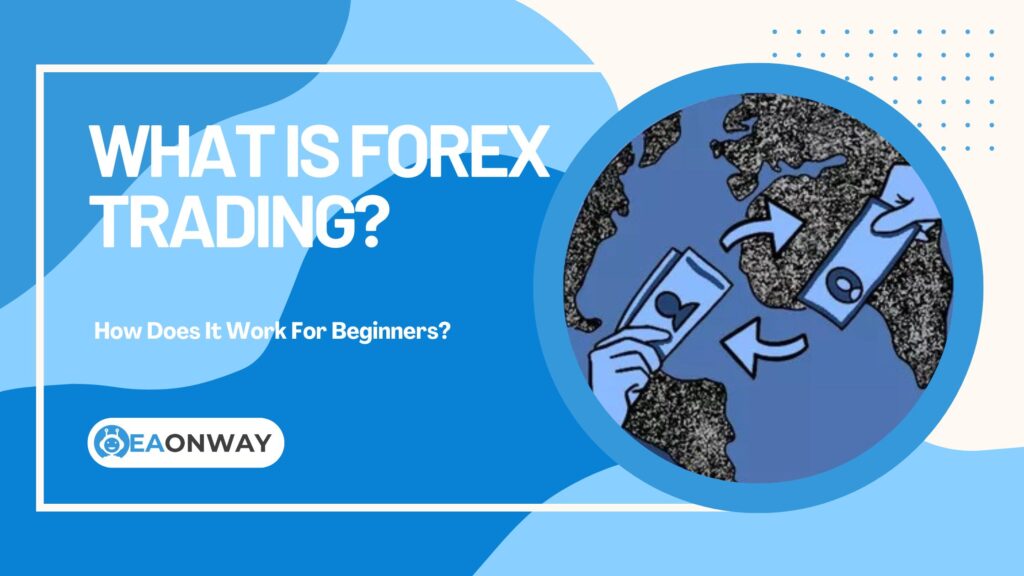Forex Order Types: Market, Limit, and Stop Orders Explained
Mastering Forex order types is fundamental for navigating the currency markets effectively, allowing traders precise control over trade execution and crucial risk management within Forex Trading Basics. Have you ever wondered how traders ensure they buy or sell at the price they want, or how they protect themselves from significant losses automatically? The answer lies in understanding the different instructions, or orders, you give your broker. Without this knowledge, executing a trading strategy becomes guesswork, potentially leading to missed opportunities or unexpected losses.
Navigating the fast-paced world of Forex trading requires more than just predicting market direction; it demands precise execution. Whether you’re aiming to enter the market instantly, wait for a specific price level, or automatically cut losses, the type of order you place is critical. These commands communicate your intentions to your broker, dictating how and when your trades are executed. Understanding the nuances between market orders, limit orders, and stop orders forms the bedrock of disciplined trading and effective risk control, especially when considering automated solutions like Expert Advisors (EAs).
This article delves into the core Forex order types: Market Orders, Limit Orders, and Stop Orders (including Stop-Loss and Take Profit). We will clearly explain what each order is, how it functions, the key differences between them, and their specific applications in various trading scenarios. You’ll gain insights into pending orders, order execution, potential pitfalls like slippage, and ultimately, how using the right orders contributes significantly to managing risk and aligning trade execution with your strategy – essential knowledge for anyone exploring Forex trading, manually or via EAs.
Key Takeaways
- Market Orders: Execute your trade immediately at the best currently available market price. Offers speed and certainty of execution but lacks price control, risking slippage in volatile markets.
- Limit Orders: Allow you to set a specific price (or better) at which you want to buy or sell. Provides price control but carries the risk that your order may never be filled if the market doesn’t reach your price. Used for entering trades at desired levels or setting Take Profit targets.
- Stop Orders: Become active only when the market reaches a specified ‘stop’ price. Once triggered, they typically become market orders (Stop-Loss, Stop Entry) or limit orders (Take Profit, sometimes). Essential for managing risk (Stop-Loss) and entering trades on breakouts (Stop Entry).
- Understanding is Crucial: Choosing the correct order type is fundamental for implementing trading strategies accurately and managing risk effectively. Misunderstanding orders can lead to significant financial losses.
- Pending Orders: Limit and Stop orders are types of ‘pending orders’ – they are preset instructions waiting for specific market conditions to be met before activation.
- Risk Management Focus: Stop-Loss orders are a cornerstone of risk management, designed to limit potential losses on a trade automatically.
What Are Forex Order Types and Why Do They Matter?
Understanding the commands you use to interact with the Forex market is essential. These commands are known as orders.
Defining Forex Orders: The Instructions You Give Your Broker
What exactly is a Forex order?
A Forex order is simply an instruction sent to your Forex broker to execute a trade – either buying or selling a currency pair – under specific conditions. Think of it as telling your broker precisely how, when, and potentially at what price you want your trade to happen. These instructions form the basis of all trading activity.
Why Understanding Order Types is Crucial for Traders
Why is it so important to know the different order types?
Understanding Forex order types is crucial because it directly impacts your ability to execute your trading plan effectively and manage risk. Choosing the right order determines:
- Control Over Entry/Exit Prices: Limit orders give you price control, while market orders prioritize speed.
- Risk Management Implementation: Stop-loss orders are vital tools for automatically limiting potential losses. Take-profit orders help secure gains.
- Strategy Alignment: Different strategies require different order types (e.g., breakout strategies often use stop entry orders, while scalping might favor market orders).
- Avoiding Costly Mistakes: Using the wrong order type (like confusing a limit order with a stop order) can lead to unintended entries, missed opportunities, or larger-than-expected losses. Without this knowledge, you’re essentially trading blindfolded regarding execution.
The Market Order: Instant Action (With Caveats)
When speed is the priority, traders often turn to market orders.
What is a Market Order in Forex?
A Market Order is an instruction to your broker to buy or sell a currency pair immediately at the best available price in the market at that exact moment. It’s the simplest type of order, prioritizing execution speed over a specific price level.
Market orders are the most basic instruction. When you place a market order to buy, you’ll typically be filled at the current ask price. When you place a market order to sell, you’ll usually be filled at the current bid price. The primary goal is to get into or out of the market now.
How Does a Market Order Work?
When you submit a market order, your broker’s system instantly seeks the best available counterparty order on their liquidity network or order book. For a buy order, it finds the lowest available sell price (ask); for a sell order, it finds the highest available buy price (bid). The trade is executed almost instantaneously at that price.
When Might You Use a Market Order?
Market orders are often used when:
- You believe the market is moving quickly in your favor and want to enter immediately to avoid missing the move.
- You need to exit a position urgently, perhaps due to unexpected news or reaching a critical stop-level manually.
- Trading in highly liquid markets where the bid-ask spread is very tight, minimizing the potential impact of slippage.
- Certain short-term strategies like scalping might rely on immediate execution.
What are the Advantages of Market Orders?
The main advantage is certainty of execution. Barring extreme market conditions, your market order will almost always be filled quickly. You won’t miss getting into or out of the market because you were waiting for a specific price.
What are the Disadvantages and Risks? (Slippage Explained)
The primary disadvantage is the lack of price control and the risk of slippage.
What is slippage in Forex?
Slippage occurs when the price at which your market order is executed differs from the price you saw when you clicked the button. This happens because the market price can change in the milliseconds between you sending the order and the broker executing it, especially during volatile periods or when placing large orders.
- Negative Slippage: Your buy order executes at a higher price, or your sell order executes at a lower price than expected. This is the most common concern.
- Positive Slippage: Your buy order executes at a lower price, or your sell order executes at a higher price. While possible, it’s generally less frequent.
The risk of significant negative slippage increases during major news events, periods of low liquidity (like overnight or during market rollover), or in fast-moving market conditions. Regulatory bodies often provide guidance on best execution practices brokers should follow, aiming to minimize unnecessary slippage for clients (Source: FCA Handbook, COBS 11.2A Best Execution). Relying solely on market orders without understanding slippage can erode profits or increase losses unexpectedly.
The Limit Order: Trading on Your Terms
Limit orders offer traders a way to exert control over the prices at which they enter or exit the market.
What is a Limit Order in Forex?
A Limit Order is an instruction to your broker to buy or sell a currency pair only at a specific price you set, or potentially at a price that is more favorable to you. Unlike a market order, it prioritizes price over immediate execution.
With a limit order, you define your maximum buying price or minimum selling price. Your broker will only execute the trade if the market reaches that price level or offers a better one (lower for buys, higher for sells).
How Does a Limit Order Work? (Buy Limit vs. Sell Limit Explained)
Limit orders are ‘pending orders’ – they sit waiting until the market condition (price) is met.
- Buy Limit Order: Placed below the current market price. This order instructs your broker to buy only if the market price drops down to your specified limit price or lower. Traders use this hoping to buy into a dip or at a perceived support level.
- Example: EUR/USD is trading at 1.0850. You place a Buy Limit order at 1.0800. The order will only trigger and attempt to fill if the market price falls to 1.0800 or below.
- Sell Limit Order: Placed above the current market price. This order instructs your broker to sell only if the market price rises up to your specified limit price or higher. Traders use this hoping to sell into a rally or at a perceived resistance level.
- Example: GBP/JPY is trading at 198.50. You place a Sell Limit order at 199.00. The order will only trigger and attempt to fill if the market price climbs to 199.00 or higher.
Buy Limit vs. Buy Stop: Understanding the Key Difference
What is the difference between a Buy Limit and a Buy Stop?
The key difference lies in where the order is placed relative to the current market price and the trader’s expectation.
- Buy Limit: Placed below the current price. You expect the price to fall to your limit level and then potentially reverse upwards (buying the dip).
- Buy Stop: Placed above the current price (discussed later under Stop Orders). You expect the price to continue rising once it breaks above your stop level (buying the breakout).
Sell Limit vs. Sell Stop: Clarifying the Distinction
What is the difference between a Sell Limit and a Sell Stop?
Similarly, the placement relative to the current market price and the expectation differ.
- Sell Limit: Placed above the current price. You expect the price to rise to your limit level and then potentially reverse downwards (selling the rally).
- Sell Stop: Placed below the current price (discussed later under Stop Orders). You expect the price to continue falling once it breaks below your stop level (selling the breakdown).
When Are Limit Orders Typically Used?
Limit orders are commonly used for:
- Entering trades at more favorable prices: Buying lower or selling higher than the current market rate.
- Setting Take Profit (TP) targets: A Take Profit order is often a type of limit order used to automatically close a profitable trade when it reaches a predetermined price level. (e.g., if you are long EUR/USD, you place a Sell Limit order above the current price as your Take Profit).
- Trading strategies based on support and resistance levels or mean reversion.
What are the Advantages of Limit Orders?
The primary advantage is price control. You guarantee that your order, if filled, will be executed at your specified price or better. This eliminates the risk of negative slippage on entry or exit (for Take Profit). It allows for precise planning based on specific price levels identified through analysis.
What are the Disadvantages and Risks?
The main disadvantage is the risk of the order not being filled. If the market price never reaches your limit price, your order will remain pending and eventually expire (depending on your broker’s settings or the duration you set, like Good ‘Til Cancelled – GTC). You might miss out on a trade entirely if the market moves away from your level without triggering the order.
The Stop Order: Managing Risk and Capturing Moves
Stop orders are another crucial category of pending orders, primarily known for risk management but also used for entering trades.
What is a Stop Order in Forex?
A Stop Order is an instruction to your broker to execute a trade (usually as a market order) only after the market price reaches a specific, predetermined level known as the ‘stop price’. Unlike limit orders which seek better prices, stop orders are triggered by prices moving against your desired initial direction (for Stop-Loss) or through a key level (for Stop Entry).
Once the stop price is touched or breached, the stop order is activated. What happens next depends on the specific type of stop order.
The Crucial Role of the Stop-Loss Order
This is arguably the most critical order type for risk management in Forex trading.
What is a Stop-Loss Order?
A Stop-Loss Order is a defensive pending order linked to an open trade, designed to automatically close the position at the market if the price moves against you by a specified amount, thus limiting potential losses. It triggers when the market hits your predetermined stop-loss price.
How Does a Stop-Loss Order Protect Your Capital?
By setting a stop-loss, you define the maximum amount you are willing to risk on a single trade before you even enter it. If the market turns against your position and reaches your stop-loss level, the order activates (typically becoming a market order) and closes your trade, preventing further losses beyond that point. This enforces discipline and helps protect your trading capital from catastrophic drawdowns. Implementing stop-losses is a fundamental principle of responsible trading. Many regulatory bodies emphasize the importance of risk management disclosures by brokers, implicitly highlighting the need for tools like stop-losses (Source: CFTC Consumer Advisory on Forex Risks).
Potential Issues: Slippage on Stop-Loss Orders
It’s vital to understand that standard stop-loss orders, once triggered, usually convert into market orders. This means they are subject to slippage, just like regular market orders. In very fast-moving markets or during gaps (e.g., over weekends or major news), your stop-loss might be filled at a price significantly worse than your specified stop level. While it still closes the trade, the actual loss could be larger than initially planned. Some brokers offer ‘guaranteed stop-loss orders’ (often for an extra fee or wider spread) which ensure execution at your exact stop price, regardless of slippage, but these are not universally available.
Using Stop Orders for Entry: Buy Stops and Sell Stops
Stop orders aren’t just for exiting losing trades; they can also be used to enter the market.
What is a Buy Stop Order?
A Buy Stop Order is placed above the current market price. It instructs your broker to initiate a buy trade (usually as a market order) only if the market price rises up to or through your specified stop price. Traders use this to enter a long position if they believe upward momentum will continue after breaking a resistance level or key price point.
- Example: AUD/USD is trading at 0.6600. You believe if it breaks above 0.6630, it will rally further. You place a Buy Stop order at 0.6630. If the price hits 0.6630, a buy market order is triggered.
What is a Sell Stop Order?
A Sell Stop Order is placed below the current market price. It instructs your broker to initiate a sell trade (usually as a market order) only if the market price falls down to or through your specified stop price. Traders use this to enter a short position if they believe downward momentum will continue after breaking a support level or key price point.
- Example: USD/CAD is trading at 1.3700. You believe if it breaks below 1.3670, it will fall further. You place a Sell Stop order at 1.3670. If the price hits 1.3670, a sell market order is triggered.
When Are Stop Entry Orders Used?
Stop entry orders (Buy Stops and Sell Stops) are commonly used in breakout trading strategies. The idea is to capture momentum as the price decisively moves beyond a significant level (resistance for buys, support for sells). They are also used in trend-following strategies to enter once a trend appears to be resuming.
The Take Profit Order: Locking in Gains (Often a Limit Order)
While conceptually linked to exiting a trade like a stop-loss, the Take Profit order functions differently.
What is a Take Profit Order?
A Take Profit (TP) Order is a pending order linked to an open trade, designed to automatically close the position at the market once it reaches a specified, favorable profit target price. It secures profits before the market potentially reverses.
How Does a Take Profit Order Work?
Technically, a Take Profit order often functions as a limit order.
- If you have a long (buy) position, your TP order is a Sell Limit placed above your entry price.
- If you have a short (sell) position, your TP order is a Buy Limit placed below your entry price.
When the market price reaches your TP level, the limit order is triggered, closing your position and locking in the profit. Because it functions as a limit order, it aims to execute at your specified price or better, generally avoiding negative slippage on exit (though positive slippage is possible).
Trailing Stop Loss: Protecting Profits Dynamically
A more advanced variation of the stop-loss is the trailing stop.
What is a Trailing Stop Loss?
A Trailing Stop Loss is a dynamic type of stop-loss order that automatically adjusts itself as the market moves favorably for your trade. It ‘trails’ the market price by a set distance (in pips or percentage) but only moves in the direction that increases potential profit. It never moves back down (for a long trade) or back up (for a short trade).
How Does a Trailing Stop Work?
- For a Long Trade: You set a trailing stop distance (e.g., 50 pips). As the price moves up, the stop-loss level also moves up, maintaining the 50-pip distance from the highest price reached since the trade was opened. If the price then falls by 50 pips from its peak, the stop-loss is triggered.
- For a Short Trade: You set a trailing distance. As the price moves down, the stop-loss level also moves down, maintaining the distance from the lowest price reached. If the price then rises by the set distance from its lowest point, the stop-loss is triggered.
Advantages and Disadvantages of Trailing Stops
- Advantage: Allows you to protect accumulating profits without manually adjusting your stop-loss constantly. It gives winning trades room to run while still locking in gains if the market reverses sharply.
- Disadvantage: Can be triggered prematurely by normal market volatility or short-term pullbacks, potentially closing out a trade that might have continued profitably. Setting the appropriate trailing distance is crucial and often depends on market conditions and the traded instrument’s volatility. Trailing stops typically reside on the trading platform (client-side) or broker’s server (server-side), which can affect execution if your platform disconnects (for client-side).
Pending Orders vs. Instant Execution: A Clear Comparison
Understanding the fundamental difference between orders that wait and orders that act now is key.
What Are Pending Orders in Forex?
Pending Orders are instructions that are not executed immediately but are held by the broker until specific market conditions are met. The primary types of pending orders are:
- Limit Orders (Buy Limit, Sell Limit, Take Profit): Triggered when the market reaches a specific price or better.
- Stop Orders (Buy Stop, Sell Stop, Stop-Loss): Triggered when the market reaches a specific stop price, usually activating a market order thereafter.
These orders allow traders to plan entries and exits in advance without needing to constantly monitor the market. Most trading platforms like MetaTrader 4 (MT4) offer robust functionality for managing these MT4 order types.
What is Instant Execution?
Instant Execution refers to orders that aim to be filled immediately at the current market price. The primary example is the Market Order. When you place a market order, you are requesting immediate execution at the best price available right now.
Key Differences Summarized
| Feature | Instant Execution (Market Order) | Pending Orders (Limit/Stop) |
|---|---|---|
| Trigger | Immediate | Specific Price Level Reached |
| Price Certainty | Low (Risk of Slippage) | High (Limit) / Low after trigger (Stop) |
| Fill Certainty | High | Lower (Limit) / High after trigger (Stop) |
| Primary Use | Speed, Urgency | Planning, Price Control, Risk Mgmt |
Order Execution: What Happens Behind the Scenes?
Placing an order is just the start; understanding how it gets filled is also important.
How Brokers Handle Different Order Types
Brokers employ sophisticated systems to manage order flow. Market orders are routed for immediate execution against available liquidity. Pending orders are monitored; when trigger conditions are met, the system activates the order according to its type (e.g., submitting a market order for a triggered stop-loss, or attempting to fill a limit order at the specified price or better). The quality and speed of execution can vary between brokers depending on their technology, liquidity providers, and execution model (Dealing Desk vs. No Dealing Desk).
Understanding the Forex Order Book (Briefly)
While retail traders don’t typically see a deep, centralized order book like in stock markets, the concept helps understand execution. Brokers aggregate liquidity (buy and sell orders) from various sources (banks, other brokers, institutions). Your market order consumes the best available price from this pool. Your limit order adds liquidity to the book, waiting for a matching counterparty order. The depth and tightness of this aggregated liquidity impact execution quality and slippage. Data from institutions like the Bank for International Settlements (BIS) periodically surveys the global Forex market, highlighting its immense size and decentralized structure, which influences order execution dynamics (Source: BIS Triennial Central Bank Survey).
Factors Affecting Order Execution Speed and Quality
Several factors influence how quickly and efficiently your orders are filled:
- Market Liquidity: Higher liquidity (more buyers and sellers) generally means faster execution and tighter spreads, reducing slippage risk. Major pairs during peak trading hours (e.g., London/New York overlap) typically have the highest liquidity.
- Market Volatility: High volatility increases the chance of rapid price changes between order placement and execution, leading to greater slippage risk for market and stop orders.
- Broker Infrastructure: The broker’s server speed, connection stability, and relationships with liquidity providers play a significant role.
- Order Size: Very large orders may experience more slippage as they consume multiple levels of liquidity.
- Internet Connection: Your own connection speed and latency can impact the time it takes for your order to reach the broker’s server.
Common Pitfalls and Considerations
Using Forex orders effectively requires awareness of potential issues.
The Danger of Slippage: When Your Price Isn’t Your Price
As discussed, slippage primarily affects Market Orders and standard Stop Orders (including Stop-Loss). While sometimes unavoidable, be particularly cautious during high-impact news releases or periods of low liquidity. Factor potential slippage into your risk calculations.
Forgetting to Place Stop-Loss Orders: A Critical Error
Trading without a stop-loss is one of the most common and damaging mistakes new traders make. It exposes your entire account capital to potentially unlimited risk on a single trade. Always define your risk and use a stop-loss order on every trade.
Misunderstanding Buy/Sell Limit vs. Buy/Sell Stop
Confusing these order types can lead to entering trades exactly opposite to your intention (e.g., placing a Buy Limit expecting a breakout instead of a Buy Stop). Double-check your order type and price level relative to the current market price before submitting.
Over-Reliance on One Order Type
Different market conditions and strategies call for different order types. Relying solely on market orders ignores price control benefits, while only using limit orders might mean missing out on strong moves. Learn to use the appropriate order for the situation.
Considering Broker Spreads and Commissions
Remember that the execution price will also factor in the broker’s spread (the difference between the bid and ask price). For stop-loss orders, the spread means a sell stop-loss triggers at the bid price, and a buy stop-loss triggers at the ask price. Factor these costs into your trade planning.
Conclusion
Mastering Forex order types – Market, Limit, and Stop orders – is not just a technical detail; it’s a cornerstone of disciplined and effective Forex trading. Market orders offer speed but sacrifice price control, making them prone to slippage. Limit orders provide price precision but risk non-execution if the market doesn’t reach your level. Stop orders are indispensable for risk management (Stop-Loss) and can facilitate entry strategies (Stop Entry orders like Buy Stops and Sell Stops). Understanding the function, advantages, and disadvantages of each, along with concepts like pending orders, slippage, and execution, empowers you to interact with the market deliberately and strategically.
Ultimately, the goal is to use these tools to execute your trading plan faithfully while rigorously managing risk. No order type guarantees profit, but understanding and applying them correctly significantly improves your ability to control trades and protect capital. As EaOnWay.com emphasizes education, grasping these fundamentals is crucial before engaging with the complexities of the Forex market or utilizing automated tools like Forex EAs, helping you avoid false expectations and navigate risks more effectively.
Important Risk Warning
The information provided in this article is for educational purposes only and does not constitute financial or investment advice. Forex trading involves a substantial risk of loss and is not suitable for all investors. The high degree of leverage associated with Forex trading can work against you as well as for you. Before deciding to trade Forex, you should carefully consider your investment objectives, level of experience, and risk appetite. There is a possibility that you could sustain a loss of some or all of your initial investment, and therefore you should not invest money that you cannot afford to lose. You should be aware of all the risks associated with Forex trading and seek advice from an independent financial advisor if you have any doubts. Past performance is not indicative of future results. EaOnWay.com provides educational content and does not endorse or sell specific trading products or promise profits.

